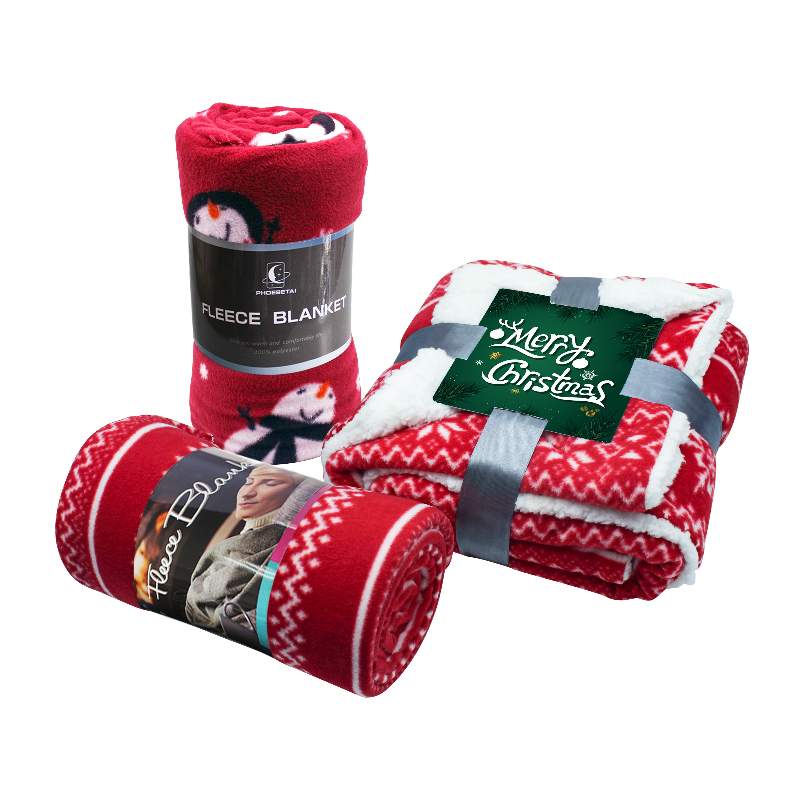Certainly! Here’s a detailed overview of the rotary screen printing process for blankets, commonly known as round screen printing or cylinder screen printing. This method is widely used for producing high-quality, detailed prints on textiles, including blankets.
Rotary Screen Printing Process for Blankets

1.Preparation of the Blanket
•Material Selection: Choose the appropriate type of blanket material (e.g., cotton, polyester, blends) based on the desired characteristics such as softness, durability, and printability.
•Pre-Treatment: The blanket may need to be pre-treated to improve ink adhesion. This can involve washing, bleaching, or applying a sizing agent to ensure a smooth surface for printing.
2.Design Preparation
•Artwork Creation: Create the design using graphic design software. Ensure the design is suitable for rotary screen printing, considering factors like color separations and repeat patterns.
•Film Positive: Print the design on a transparent film to create a positive image. This film will be used to create the screens.
3.Screen Preparation
•Screen Selection: Choose the appropriate mesh size for the screen based on the design complexity and the desired level of detail.
•Coating the Screen: Apply a photosensitive emulsion to the screen. This emulsion will harden when exposed to light, creating a stencil.
•Exposure: Place the film positive against the coated screen and expose it to UV light. The areas of the emulsion that are not covered by the film will harden, while the areas covered by the design will remain soluble.
•Washing Out: Wash the screen with water to remove the unhardened emulsion, revealing the open areas where the ink will pass through.
4.Ink Preparation
•Ink Selection: Choose the appropriate type of ink for the fabric, such as water-based, plastisol, or reactive inks. Each type has different properties and is suitable for different materials and applications.
•Color Matching: Mix the ink to match the desired colors using a color matching system (CMS) or by hand.
5.Printing Setup
•Machine Setup: Install the prepared screens onto the rotary printing machine. Each screen corresponds to a different color in the design.
•Registration: Align the screens precisely to ensure that each color prints in the correct position relative to the others. This is crucial for achieving a clear and accurate final print.
•Blanket Feeding: Load the blankets onto the printing machine. The machine will feed the blankets through the printing station in a continuous process.
6.Printing Process
•Inking: Apply the ink to the top of the screen. As the screen rotates, a squeegee or doctor blade forces the ink through the open areas of the screen and onto the blanket.
•Drying: After each color is printed, the blanket passes through a drying unit to set the ink. This can be a hot air dryer or a curing oven, depending on the type of ink used.
•Multiple Colors: For designs with multiple colors, the blanket passes through each color station in sequence. The machine ensures that each color is applied accurately and in the correct order.
7.Post-Processing
•Final Drying: After all colors have been printed, the blanket undergoes a final drying or curing process to ensure the ink is fully set and bonded to the fabric.
•Inspection: Check the printed blankets for any defects such as smudges, misalignments, or color inconsistencies.
•Finishing: Trim any excess edges or threads and prepare the blankets for packaging.
8.Packaging and Shipping
•Packaging: Fold and package the printed blankets in appropriate packaging materials to protect them during shipping.
•Labeling: Attach labels with product information, care instructions, and branding.
•Shipping: Ship the finished blankets to the desired destination.Advantages of Rotary Screen Printing
•High-Quality Prints: Produces sharp, detailed prints with excellent color accuracy.
•Efficiency: Suitable for large-scale production, as the process is fast and can handle high volumes.
•Versatility: Can be used on a variety of fabric types and can accommodate complex designs with multiple colors.
By following these steps, you can achieve high-quality, consistent prints on your blankets using the rotary screen printing method.
